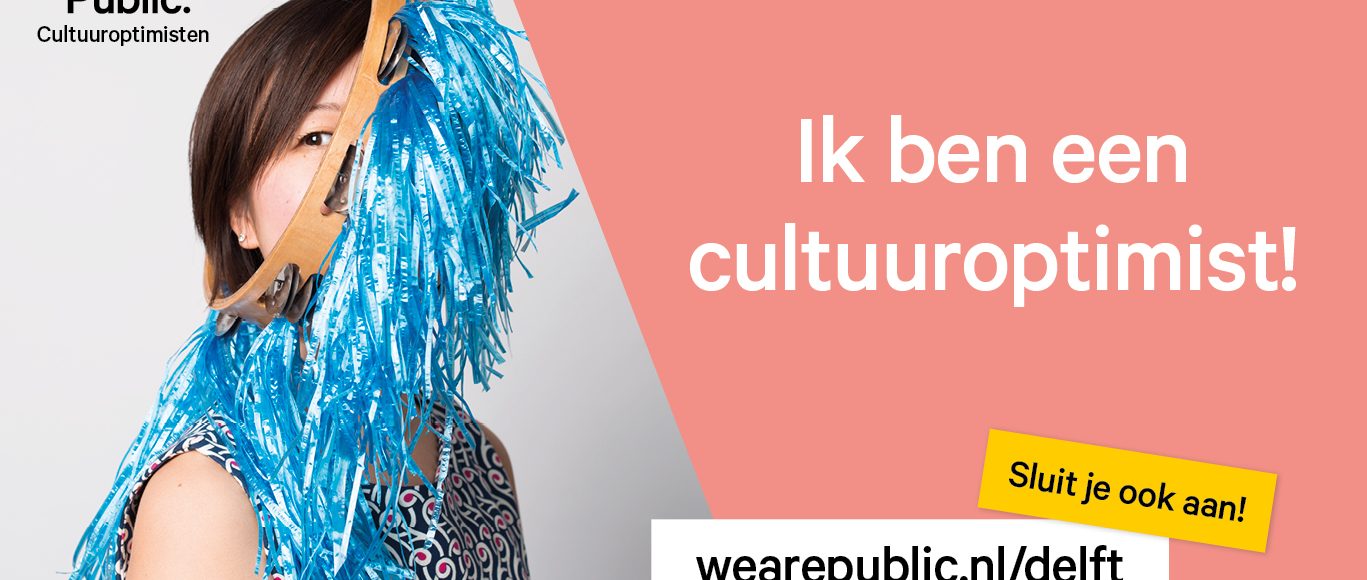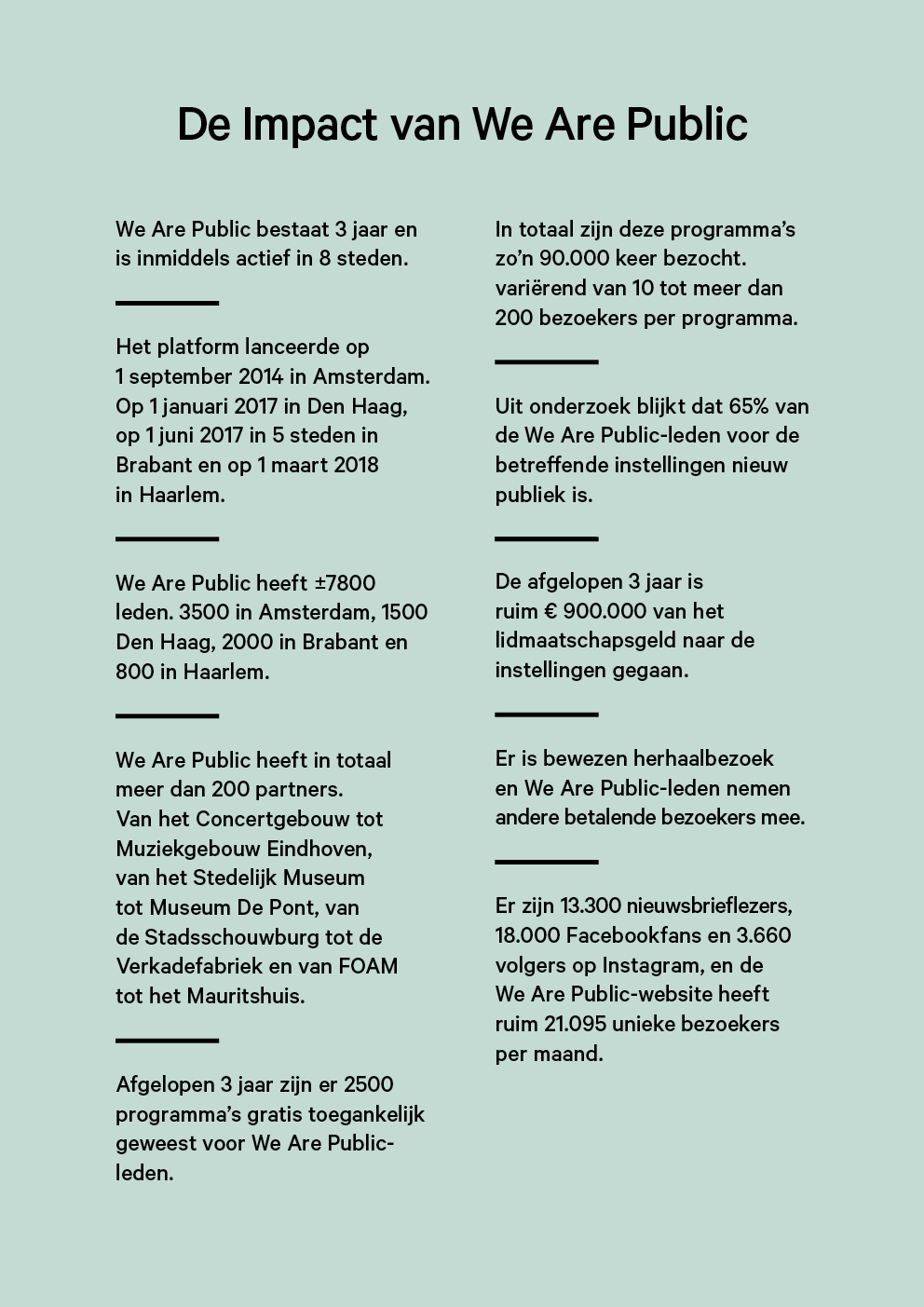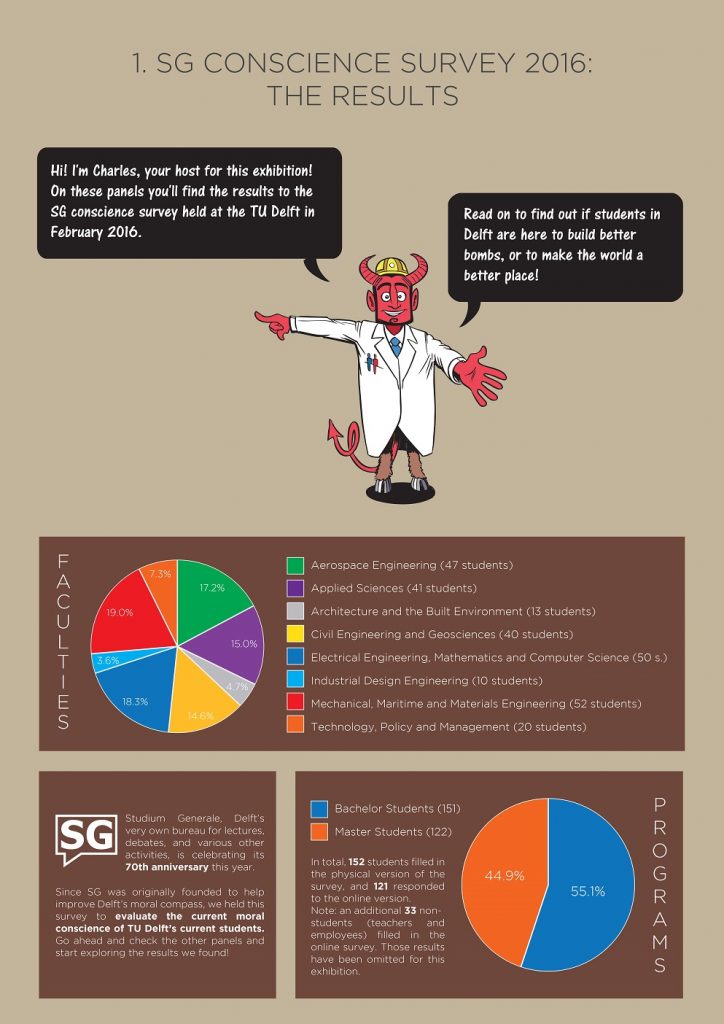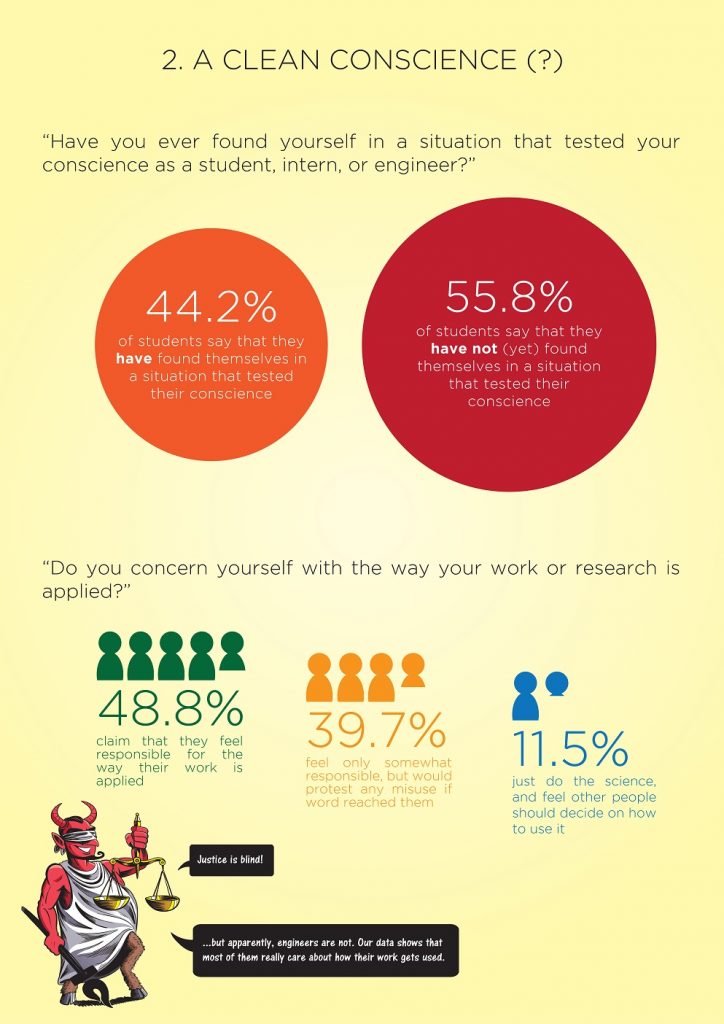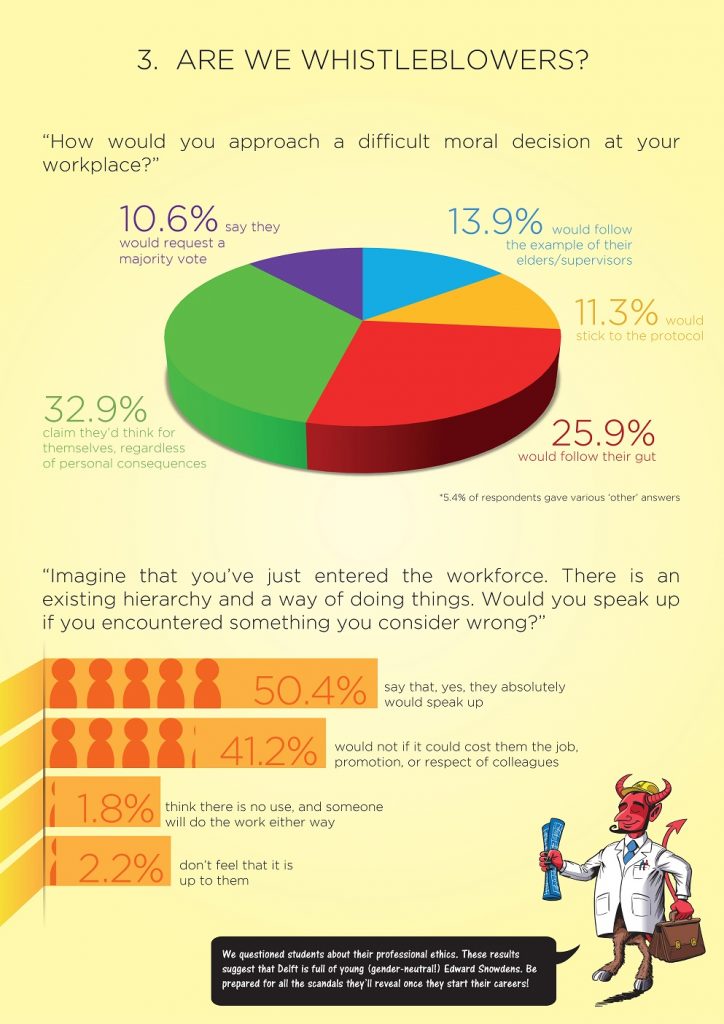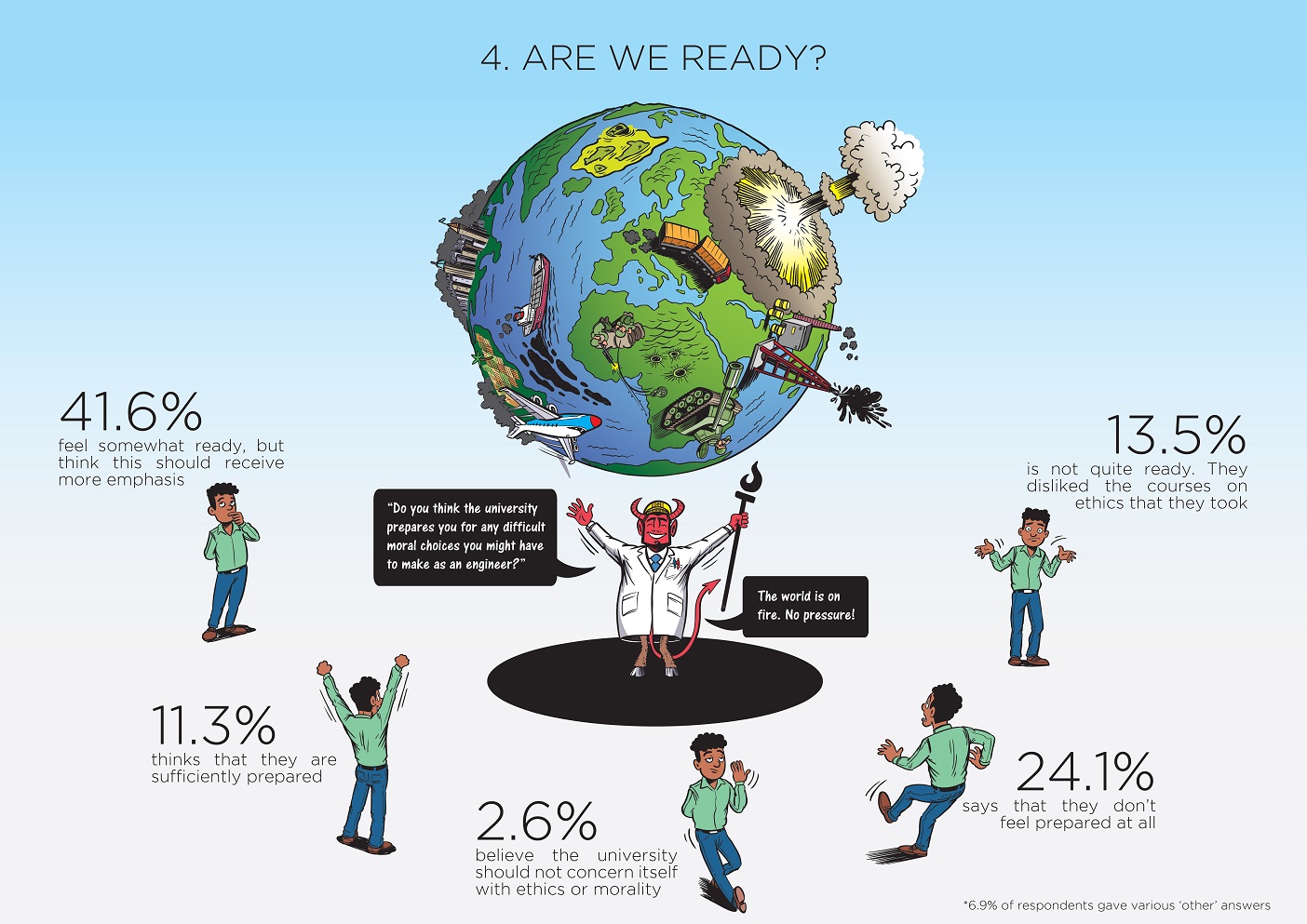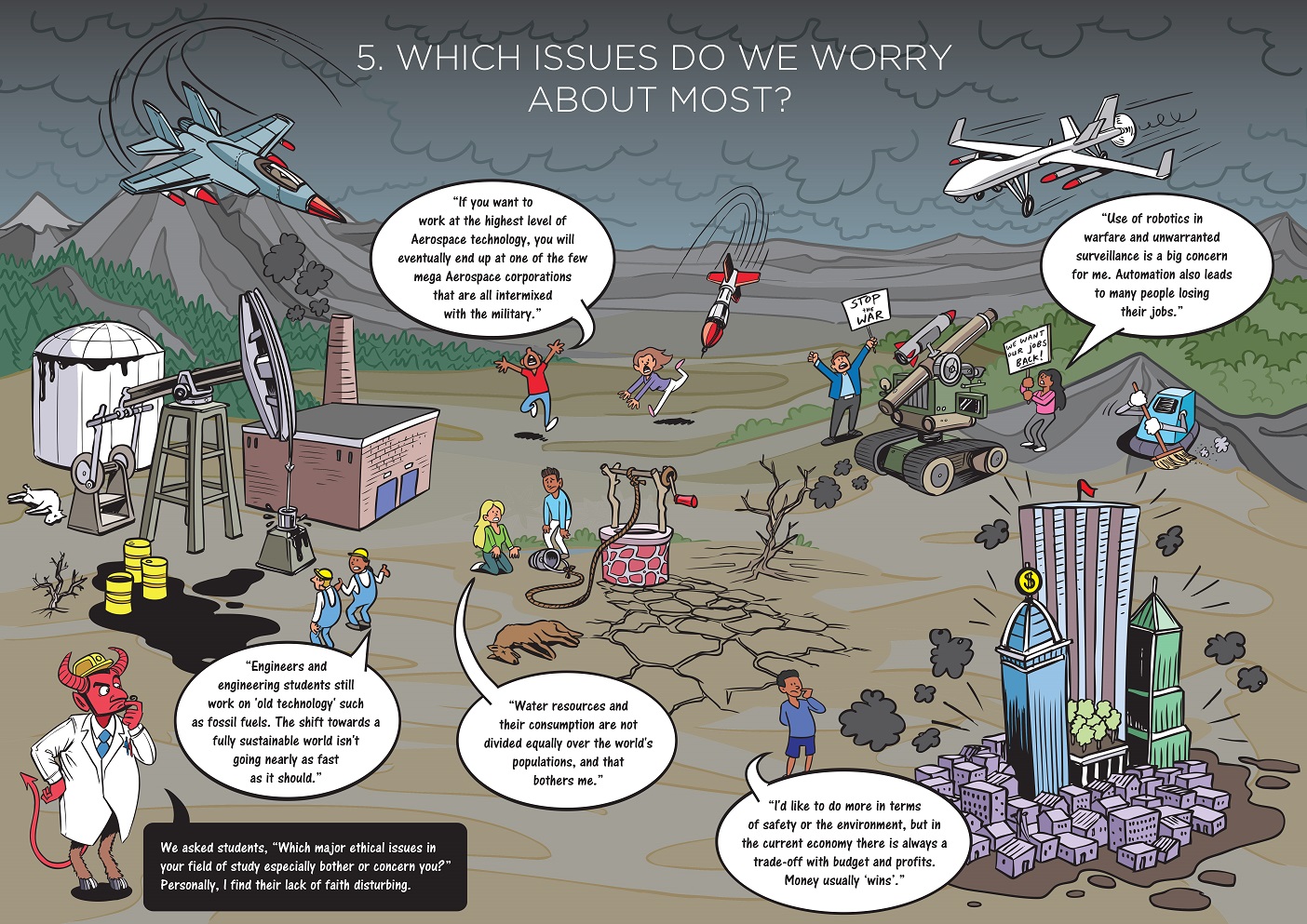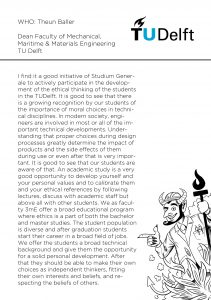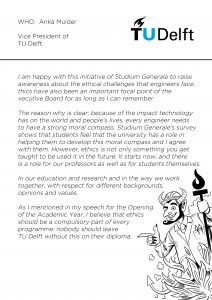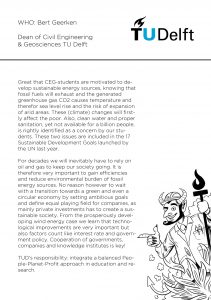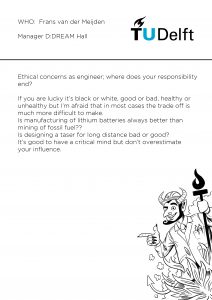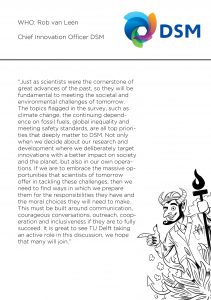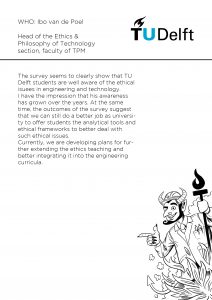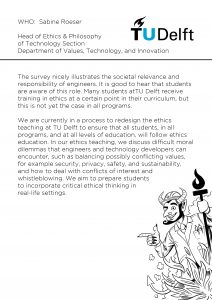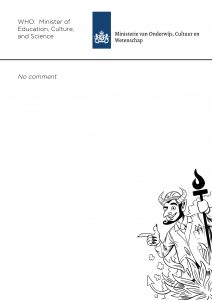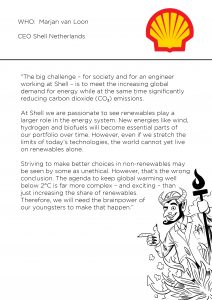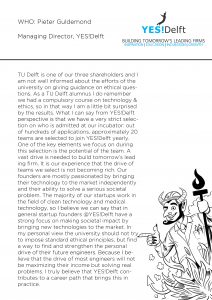The Future of Peace, Weapons, and War
Mary Ellen O’Connell
It is an honor to deliver this lecture named for Frans van Hasselt, who in 1940 spoke out in protest of the injustices of the Nazi occupation of The Netherlands while at the Deflt University of Technology. He paid for his words with his life. Yet, his example lives on and is rightly commemorated on the day when 70 years ago peace returned to The Netherlands and with it, the hope of justice. These remarks call for the return of peace again—the return of the idea that peace is as possible as it is necessary for justice to flourish.
This plea for peace is necessitated by a growing perception that security demands constant war. In March 2015, Georgetown University law professor Rosa Brooks published an essay in the influential journal, Foreign Policy, titled, “There’s No Such Thing as Peacetime”. In it she argues that we should abandon “the Sisyphean effort to ‘end’ war and instead focus on developing norms and institutions that support rights and the rule of law … not premised … on a distinction between war and peace.” She is not alone in imagining no future for peace.
These remarks argue the opposite. They draw on two 17th-century thinkers, who have come to personify today’s competing characterizations of our world as a place where war has become the normal situation and peace the exception or where peace remains the norm and war is the exception. The hero of the war camp is the Englishman, Thomas Hobbes; the hero of peace is the Dutchman, Hugo Grotius.
Hobbes included in his famous book, Leviathan, published in 1651, the belief that outside of nation-states ruled by governments is the state of nature, where people are prone to engage in constant war–wars of all against all. Hobbes describes humanity as being, in the words of Sir Hersch Lauterpacht, “essentially selfish, anti-social, and unable to learn from experience … the basis of political obligation is interest pure and simple; the idea of a sense of moral duty rising supreme over desire and passion is a figment of imagination ….” [Hersch Lauterpacht, The Grotian Tradition in International Law, 23 BRIT. YBK. INT’L L. 1-53 (1946).]
Grotius, by contrast, saw the world and humanity very differently. His book, On the Law of War and Peace of 1625, was written to help to end the Thirty Years War between Catholics and Protestants in Western Europe. Grotius did not believe a world government is necessary to preserve the peace; he did believe world law is needed. According to Lauterpacht, Grotius developed his ideas out of his conviction that people are “intrinsically moved by a desire for social life, endowed with an ample measure of goodness, altruism, and morality, and capable of acting on general principle and of learning from experience.”3 Grotius affirmed the legal and moral unity of humanity and understood law to be necessary to all human societies from the local to the international. His views contrast starkly with those holding that national interest should be the overriding basis of state policy.
It has been fashionable since the end of the Cold War to take the Hobbesian view, which in contemporary terms means to extol military force. For twenty-five years we [ Id. at 24Hersch Lauterpacht, The Grotian Tradition in International Law, 23 BRIT. YBK. INT’L L. 1-53 (1946)] have been hearing of the utility and even morality of resort to war to achieve all sorts of desirable ends from advancing human rights, democracy, and self-determination to preventing terrorism and punishing the use of chemical weapons. Because the use of force for these purposes currently violates international law, we are also hearing arguments for expanding the legal right to use military force. The aim is to modify the United Nations Charter’s general prohibition on the resort to force to permit more exceptions. Currently the Charter provides only two express exceptions. One is for self-defense to a significant armed attack. The other is for the use of force with the authorization of the UN Security Council.
There is, however, a different perspective. It is based on the Grotian view of humanity and sees the possibility of greater peace under the international law than we have now. This view supports the current strict limits on resort to war and advocates expanding the restrictions. The Groatian view may sound to many contemporary ears platitudinous, unrealistic, and even dangerous. People have become convinced that it is a matter of kill or be killed. Such a conviction can be reversed once it is understood how the contemporary Hobbesian view became so dominant and how the Grotian view can be seen as the more compelling.
There are many reasons why Hobbesian realism has come to dominate Western thinking. Realist ideology helps to account for the growth of the massive military apparatus found in the United States, which has taken on a life of its own.4 Having such capacity seems to cry out to some people for using it. Just one aspect of this this phenomenon, new weapons technology, amply demonstrates how the possession of President Dwight Eisenhower waned of the “military-industrial complex” in 1961 [ available here: http://coursesa.matrix.msu.edu/~hst306/documents/indust.html].
Here words were prophetic and unheeded certain weapons is associated with pressure to use them, regardless of the law. The computer revolution in military affairs has given the world the weaponized unmanned vehicle or drone, which is rapidly being developed into fully autonomous robotic weapons along with another computer dependent invention, so-called “cyber weapons.” [See generally, Mary Ellen O’Connell, 21st Century Arms Control Challenges: Drones, Cyber Weapons, Killer Robots, and WMDs, 13 WASH. U. GLOBAL STUD. L. REV. 515 (2014), http://openscholarship.wustl.edu/law_globalstudies/vol13/iss3/11]
For US leaders this new weapons technology has substantially lowered the political costs of killing with military force. The impression of low cost, especially in terms of personnel killed, has helped to bring about the result that the US now engages in militarized policing at home and abroad. More worrying is that prominent international law scholars, like Brooks, and philosophers, like Oxford’s Jeff McMahan, defend the policy to use force abroad regardless of current rules.[See McMahan’s view that the law against war in the UN Charter is “largely obsolete” in Jeff McMahan, Laws of War, in THE PHILOSOPHY OF INTERNATIONAL LAW 493, 496 (Samantha Besson & John Tasioulas eds., 2010)]
In responding in Grotian terms to these challengers of international law, new hope lies in aesthetic philosophy–the philosophy of beauty, which supports Grotius’s optimistic view of humanity; his view that our interest in others, our social nature and capacity for altruism are as true of us as self-interest. [ See Mary Ellen O’Connell, Drawing on Beauty, Aesthetics, Authority and International Law (in progress.)]
With a more balanced view of human capacity, the case for respecting international law, especially, the prohibition on the resort to military force, becomes attractive again. The philosophy of beauty adds persuasive weight to the Grotian response to Hobbes and can renew us in the desire to do the work that must be done for a future of peace.
I. From Hobbes to Brooks
The Hobbesian view can be seen clearly in Rosa Brooks’ essay: [Human] rights advocates are often inclined to dismiss the increasing blurriness of the boundaries between war and peace as merely a product of disingenuous U.S. government rhetoric. They are wrong to do so. No question, there has been some disingenuous rhetoric, but recent decades have also seen real and significant changes in the geopolitical landscape: Revolutionary technological changes have reduced the salience of state borders and physical territory and have increased the lethality and disruptive capabilities of non-state actors and even individuals. The nature of modern security threats makes it virtually impossible to draw neat lines between war and peace, foreign, and domestic, emergency and normality.
She may be correct that it is more difficult today to draw “neat lines between war and peace.” She begs the question of whether it was ever “easy”, but in the era of human rights if it is difficult to distinguish war from peace, our legal and ethical principles tell us when in doubt characterize situations as peace and apply the law of peace. Defaulting to war conflicts with the priority these principles demand that we give to human rights. In the emergency situation of war, international law permits limitations on human rights. Most significantly, during armed conflict lawful combatants will not face criminal charges for intentionally killing enemy fighters even if those fighters do not pose any immediate threat, so long as the restrictions in the Geneva Conventions and other international humanitarian law are followed.
Brooks is plainly aware of this limitation on the right to life during armed conflict and the current international legal definition of armed conflict. She recognizes that two US presidential administrations have claimed the right to kill with military force far from actual combat zones. Yet, she is willing to support these because of what she sees as new security threats that fall outside existing legal categories. In her words: “In a war against a geographically diffuse terrorist network, the spatial boundaries are necessarily arbitrary.”
But the decision to intentionally kill outside armed conflict zones or outside a zone of uncertainty is a choice. There is nothing inevitable or dictated by nature in the concept of a boundary or characterizations of what is inside the boundary, outside, or uncertain in location. Spatial boundaries are ideas. They are lines with no width; concepts of geometry that we imagine. If boundaries are arbitrary for Brooks it is because she has chosen to conceive of boundaries as far more abstract than someone who associates boundaries with real people and the places where they live, work, and die. It is a choice to conceive of boundaries as arbitrary. It is clearly a choice to decide that killing is lawful and moral in zones of uncertainty. Current international law rejects these choices when it comes to killing.
Brooks’ argument against boundaries is consistent with her call for “perpetual war”. While she has criticized some drone strikes, she also finds fault with current international law, believing like McMahan that it is obsolete. She served as a political appointee for two years in the Obama Pentagon and shares the now prevailing view in U.S. military, legal and philosophical circles that circumstances have so changed that international law should be interpreted or changed to allow a greater legal right to use military force.
This development did not begin with 9/11. It really started when the first Clinton administration took office in 1992 and has spread in the international law and philosophy literature from the United States to NATO countries and Australia. The French philosopher Grégoire Chamayou has recently written: [L]arge-scale intellectual maneuvers are in the offing and semantic coups are being plotted. In fact, a whole collection of theoretical offensives are being launched with the aim of appropriating, twisting, and redefining concepts that, by naming and theorizing violence, allow it to be legitimately exercised … Bringing about this moral conversion and transmutation of values is the task to which philosophers working within the confined field of military ethics today devote themselves … But the offensive is also and perhaps above all pushing into the field of legal theory. “Warfare without risk,” in which the drone is probably the most effective instrument, critically undermines the meta-legal principles that underpin the right to kill in war. … The aim is to accommodate the right to “targeted assassination”.[ GRÉGOIRE CHAMAYOU, A THEORY OF THE DRONE 17 (2013).]
For Chamayou, we in the West had a better understanding of the need for restrictions on war when we conceived that the risks were reciprocal. If our populations and soldiers faced death by the use of force, we wished to try to restrict that force by all available means, including legal and moral norms protecting the right to life. The drone has undermined that source of tangible awareness of the need for restrictions. Reciprocal risk is gone. Substantial evidence indicates that following almost a decade and a half lethal operations with drones, many view drone attacks as less serious than killing carried out by ground troops, piloted planes, manned naval vessels, or a CIA agent using a knife, all of which pose some level of risk to the one doing the killing. One U.S. official has observed: “People are a lot more comfortable with a Predator strike that kills many people than with a throat-slitting that kills one.”[Jane Mayer, The Predator War, What are the Risks of the C.I.A.‘s Covert Drone Program?, THE NEW YORKER (online), 26 October 2009, http://www.newyorker.com/reporting/2009/10/26/091026fa_fact_mayer.]
The possession of technology lowers the political and psychological barriers to killing, making it easier to overlook the legal, policy and ethical limits as well.
Several years ago, a UK military report on the psychological effect of drones, observed: [O]ne of the contributory factors in controlling and limiting aggressive policy is the risk to one’s own forces. … For example, the recent extensive use of unmanned aircraft over Pakistan and Yemen may already herald a new era. That these activities are exclusively carried out by unmanned aircraft, even though very capable manned aircraft are available, and that the use of ground troops in harm’s way has been avoided, suggests that the use of force is totally a function of the existence of an unmanned capability—it is unlikely a similar scale of force would be used if this capability were not available. [United Kingdom Ministry of Defence, Joint Doctrine Note 2/11, The UK Approach to Unmanned Aircraft Systems, (30 March 2011) Ministry of Defence, [502], http://www.mod.uk/NR/rdonlyres/F9335CB2-73FC-4761-A428-DB7DF4BEC02C/0/20110505JDN_211_UAS_v2U.pdf, pp. 5.8-5.9.]
A national leader knows he can deploy drones without his own citizens coming home in body bags. This fact plainly makes the decision to kill easier for political reasons, especially in the United States where the body bag count that went on for years during the Vietnam War still haunts politicians and citizens alike. [ See, See Mary Ellen O’Connell, Seductive Drones: Learning from a Decade of Lethal Operations, 21 J. INFO. L. & SCI., 116 (2012), available at http://ssrn.com/abstract=1912635.]
For the 2011 intervention in the Libya civil war, President Obama moved away from manned aircraft to drones entirely. He had promised that the US would only be using military force in Libya for a few days. As those few days stretched into weeks, he shifted from manned aircraft to drones. With drones he could still assure US Allies that the US was making a major military commitment while at the same time assuring the American people that the US was not really involved in another armed conflict. In a debate about whether Mr. Obama was exceeding his legal authority in Libya, a Congressman asked: ‘“Could one argue that periodic drone strikes do not constitute introducing forces into hostilities since the strikes are infrequent” and “there are no boots on the ground?”’ [ Charlie Savage, Libya Effort is Called a Violation of War Act, N.Y.TIMES, May 25, 2011, available at http://www.nytimes.com/2011/05/26/world/middleeast/26powers.html?_r=1&emc=eta1.]
This last point, no boots on the ground, has been a significant political factor in the use of drones in Pakistan. Pakistan’s government has restricted the US military presence on its territory to a small number of military trainers. To comply with this mandate, the US’s drone attacks in Pakistan have been the CIA’s responsibility.
Ironically, in Yemen, the request was the other way around. In reporting on the 2002 CIA drone strike that killed six persons in Yemen, the media related that Yemen’s President Saleh had acquiesced in the strike. We now know from Wikileaks, Saleh banned further drone attacks but permitted manned vehicle strikes. Saleh could claim that Yemen itself had carried out the attacks. The choice of launch vehicle was tied to the fact that Yemen did not possess armed drones.
Related to the political reasons for killing with drones are the psychological factors. We know that technological distance from a victim makes the decision to kill easier for the person actually controlling the weapon. Distance may ease the decision for those in the operator’s chain of command, as well, if they know they are not risking their own nationals’ lives along with the enemies’.
Without the risk to U.S. nationals and the ability to check off names on a kill list, the pressure has been on US officials to show the program is not only politically acceptable but also laudable in law and ethics. Former CIA Director Leon Panetta has emphasized that using drones is lawful because they are ‘precise’. He apparently did not address whether resorting to drones in the first place is lawful. “[V]ery frankly,” he said, “it’s the only game in town in terms of confronting and trying to disrupt the al-Qaida leadership.”’13
The US administration measures the game’s success by the number of “militants” killed with each drone strike. This feature of the drone wars is again reminiscent of the American experience in Vietnam. Year after year, US officials provided statistics of the number of enemy persons killed. The war, however, was never won. Judging by the situations in Libya, Yemen, Somalia, and to some extent Pakistan today, drone strikes have helped create far more dangerous situations than prior to their use. [Noah Shachtman, CIA Chief: Drones ‘Only Game in Town’ for Stopping Al Qaeda, WIRED, May 19, 2009, available at http://www.wired.com/dangerroom/2009/05/cia-chief-drones-only-game-in-town-for-stopping-al-qaeda/]
The wide acceptance of using drones to kill in far off countries tracks the findings of Lieutenant Colonel Dave Grossman in his 1996 book, On Killing, that distance from a victim makes the decision to kill easier or more acceptable. For Grossman, “distance from the victim” includes various concepts of distance, including physical, emotional, social, cultural, moral, and mechanical. These factors seemed to be at play in a tragic incident that occurred in Afghanistan in February 2010, in which 23 Afghan civilians were killed and another 12 injured. “[I]n his desire to support the ground forces, … the [drone] pilot ‘had a strong desire to find weapons,’ and this ‘colored — both consciously and unconsciously — his reporting of weapons and children.’”[ See the investigation into a drone strike in February 2010 that resulted in the deaths of a number of civilians. Christopher Drew, Study Cites Drone Crew in Attack on Afghans, N.Y.TIMES, Sept. 10, 2010, available at http://www.nytimes.com/2010/09/11/world/asia/11drone.html. (The Pentagon report found the Predator crew exercised “poor judgment”.]
Grossman focuses on the person who actually pulls the trigger or uses the joystick to fire the missile. Yet, the distance factor could impact everyone involved in the kill decision, including a whole society that supports such killing. By 2015, drone killing has reached a very high level of acceptance in the United States. It dipped somewhat when the media revealed several American citizens had been killed intentionally and unintentionally. Yet, with the rise of the militant group calling itself the “Islamic State”, attacking abroad has regained high levels of popularity. [See Ken Dilanian and Emily Swanson, AP-GfK Poll: Americans Approve of Drone Strikes on Terrorists, May 1, 2015, http://ap-gfkpoll.com/featured/findings-from-our-latest-poll-]
Indeed, the acceptance is so high that Americans joke about killing with drones in a way they would not, presumably, about killing with a bayonet or a cruise missile. In May 2010, at an annual dinner for journalists, politicians, and celebrities in which invited guests are expected to tell jokes, President Obama quipped about his two young daughters being fans of a band called The Jonas Brothers. Members of the group were in the audience and the president said, ‘“Boys, don’t get any ideas. I have two words for you – Predator drones…You will never see [them] coming.”’ [Adam Entous, How the White House Learned to Love the Drone, REUTERS, May 18, 2010, available at http://www.reuters.com/article/2010/05/18/us-pakistan-drones-idUSTRE64H5SL201005]
The Bush and Obama administrations have presented killing with drones as precise and imperative, and, therefore, so morally unproblematic we can joke about it. Chamayou argues that drones have altered the very relationship of the state to deadly force. He quotes the German political and legal theorist, Carl Schmitt, saying that Schmitt accurately pinpointed the effects of airpower on the juridical and political categorization of the enemy”. Schmitt’s analysis of the effects of ‘autonomous aerial warfare,’ in which ‘the lack of relation between military personnel in the air and the earth below, as well as with inhabitants thereon, is absolute,’ is still applicable today to the armed drone: ‘… Given the fact that war has been transformed into a police action against troublemakers, criminals, and pests, justification of the methods of this ‘police bombing’ must be intensified. Thus, one is compelled to push the discrimination of the opponent into the abyss.’ … He is no longer positioned, in any sense of the term, on the same ground as oneself. [Chamayou, supra n. 8, at 165-66.]
More worrying is Chamayou’s account of how populations will lose their critical attitude to war as a result of needing to make no personal sacrifice. Recall the widespread reaction in the United States to the Vietnam War once college students lost their exemption and began to be drafted. That was the beginning of the end of a thirty-year engagement.
The moral and legal cover being provided to political leaders to use drones has helped smooth the way for creating weapons with even lower political costs: fully autonomous robotic weapons and cyber weapons. [See O’Connell, 21st Century Arms Control Challenges, supra n. ]
Leaders in the United States and Israel boasted about a computer worm that infected Iranian computers associated with its nuclear program. The International Atomic Energy Agency discovered that, in 2009, highly sophisticated malware infiltrated the Iranian computers running the centrifuges along with computers across the world. US and Israeli politicians denied direct responsibility.
It soon became clear that in response to the attack, Iran began recruiting its own team of elite hackers, their goal being to prevent another attack and to gain the capacity to retaliate. Something like a world arms race for cyber weapons may now be underway. An adaptation of Stuxnet known as DuQu has already been created.
The negative consequences of Stuxnet have not, apparently, deterred the United States. In 2012, another virus was detected, known as “Flame,” which appears to be a part of the same campaign as Stuxnet. A researcher at Kaspersky Labs, who brought Flame’s existence to public light, said, “We believe Flame was written by a different team of programmers but commissioned by the same larger entity.” Like DuQu, Flame is an espionage tool. Virkram Thakur, a Symantec researcher, said, “This is the third such virus we’ve seen in the past three years. It’s larger than all of them. The question we should be asking now is: How many more such campaigns are going on that we don’t know about?”
[http://www.nytimes.com/2012/05/31/technology/researchers-link-flame-virus-to-stuxnet-and-duqu.html]
The Stuxnet virus was intended to target facilities with a specific layout. However, it was spread using USB flash drives and other means which have reached across the globe. As one expert said, “[Stuxnet] spun out of control. Although it was intended to stop the progress of Iran’s nuclear program, it also damaged 100,000 computers all over Europe. There was a need to stop it. Cyberwars act like boomerangs . . . . So it would be advisable for governments not to enter cyber-wars because in a boomerang war there are no winners.” [http://www.israelhayom.com/site/newsletter_article.php?id=9983.]
International law raises substantial barriers to both using cyber weapons and defending cyberspace from cyber attacks through the use of military force. In general, international law supports regulating cyberspace as an economic and communications sphere. The same sort of coercive measures that are lawful to use against economic wrongs and violations of arms control treaties will generally be lawful to use in the case of a cyber attack.
Despite the availability of these alternatives to the use of military force, it is important to reiterate that protecting cyberspace—keeping it viable for economic and communication uses—will generally require defensive measures, not offensive ones.
Rather than put the major emphasis on cyber security and protecting cyberspace for communications and commerce, the United States, in particular, is building capacity and developing strategies that make the Department of Defense the major player in Internet use and protection. The Pentagon conceives of cyber space as it does conventional space, with war fighting in mind. The principal U.S. activity regarding cooperation over Internet protection is within the auspices of NATO, not the UN specialized agency with Internet oversight, the International Telecommunications Union.
US military researchers are also now hard at work on artificial intelligence toward robots that once constructed and programmed will be able to make the decision to attack without additional human intervention. Such an attack could occur years after the robot is programed. The parties to the Convention on Certain Conventional Weapons began a process in 2013 to study fully autonomous robotic weapons as the first step toward a new protocol controlling or prohibiting such weapons. In April 2013, UN Special Rapporteur Christof Heyns called for a moratorium on moving beyond the design stage in the development of fully autonomous weapons pending the formation of a panel of experts to create a policy. Delft’s Jeroen Van Den Hoven and his co-authors recently presented to the experts a position that captures the way forward that I am advocating here today: “[W]e have to learn how to design for responsibility and accountability in weapon systems to make them demonstrably compliant with the fundamental moral principles underlying IHL and Human Rights Law.” [21 Jeroen van den Hoven, et al., Why the Future Needs Us Today, Moral Responsibility and Engineering Autonomous Weapons Systems, April 2015, http://www.unog.ch/80256EDD006B8954/(httpAssets)/89116E298AE593C2C1257E2A00413D61/$file/2015_LAWS_MX_VanDenHoven.pdf.] And I would add international law in general.
II. Back to Grotius
Prior to the advent of new weapons, legal scholars and moral philosophers taught that the taking of human life is only justified to protect human life. In other words, the exceptional right to resort to lethal force rests squarely on a moral justification of necessity. In armed conflict hostilities, the necessity to kill is presumed. Away from such hostilities the necessity to kill must be related to an immediate threat to life. International law on killing was built on these fundamental moral insights.
Given the political and psychological lures to killing and destroying with new technology weapons international law specialists should be alert to whether the current law on lethal operations is adequate. Rather than urge the loosening of rules as appears to be the trend today, the argument here is that the rules should be strictly applied to counter-balance the seductive attraction of killing without risk. Returning to close compliance with the rules will likely require a rejection of the realist motive of killing to project power. Killing to send a message of strength or for retribution should be seen as neither moral nor lawful.
The philosopher Jeremy Waldron has published a highly persuasive philosophical analysis rejecting arguments to loosen the law against killing, supporting every reason to strengthen it.
It seems that our first instinct is to search for areas where killing is already “alright”—killing in self-defence … or killing of combatants in wartime … and then to see if we can concoct analogies between whatever moral reasons we can associate with such licenses and the new areas of homicide we want to explore. In my view, that is how a norm against murder unravels. And it unravels in our moral repertoire largely because we have forgotten how deeply such a norm must be anchored in light of the temptations it faces and how grudging, cautious, and conservative we need to be—in order to secure that anchorage—with such existing licenses to kill as we have already issued.[22 Jeremy Waldron, Justifying Targeted Killing with a Neutral Principle? Three Possible Models in TARGETED KILLINGS, LAW AND MORALITY IN AN ASSYMMETRICAL WORLD (C. Finklestein et al. eds., 2012).]
Part of the reason that Hobbesian arguments against this view have arisen has to do with our loss of the anchor for current moral and legal norms. International law, like all law, arose out of religious beliefs. Our respect for law today can be described as an inheritance from an age when belief in the divine was widespread. Hugo Grotius exemplifies this thinking when he said, “What God has shown to be his Will, that is law.” “God determines the full and exact content of all normative categories—justice, goodness and so forth.”[ HUGO GROTIUS, COMMENTARY ON THE LAW OF PRIZE AND BOOTY (1604).]
It was Grotius himself, however, who began the undermining of the anchor or foundation on which our belief in law began. In order to win the adherence of both Protestants and Catholics to one common law above them, he famously wrote in the LAW OF WAR AND PEACE (1625), “What we have been saying [about law] would have a degree of validity even if we should concede that which cannot be conceded without the utmost wickedness, that there is no God, or that the affairs of men are of no concern to him.” It was this new concept that began the process of eliminating the divine basis of legal authority in the West. Grotius’s proposition helped him avoid theological disputes in winning adherents to his legal arguments in the short term. For many decades, the Western European conception of law continued to benefit from the centuries of association with belief in divine authority. That inheritance seems more or less depleted today.
In more recent times we see law, including international law spoken of as a substitute for religious belief. The Finnish international law scholar Martti Koskenniemi has written: International law increasingly appears as that which resists being reduced to a technique of governance. When international lawyers are interviewed on the Iraqi war, or on torture, or on trade and environment, on poverty and disease in Africa – as they increasingly are – they are not expected to engage in hair-splitting technical analyses. Instead, they are called upon to soothe anxious souls, to give voice to frustration and outrage. Moral pathos and religion frequently fail as vocabularies of engagement, providers of ‘empty signifiers’ for expressing commitment and solidarity. Foreign policy may connote party rule. This is why international law may often appear as the only available surface over which managerial governance may be challenged, the sole vocabulary with a horizon of transcendence … I often think of international law as a kind of secular faith.[ Martti Koskenniemi, The Fate of Public International Law: Between Technique and Politics, 70 MOD. L. REV. 1, 30 (2007).]
Yet how can humanity have faith in something invented by them? Hobbes based his views on what he believed could be proven materially, the selfish nature of human beings. Once belief in things outsides ourselves waned, this material fact seemed all that was left. It is no wonder that wealth maximization, the theory of so-called “rational choice” is the dominant philosophical principle underlying today’s legal scholarship in the United States, a scholarly view that is sweeping Western Europe as well. Rational choice is a form of realism that easily co-exists with Hobbesian realist ideas about international relations and international law.
In the past, law was respected because, as one legal scholar put it, “[E]very human or positive law derive[d] from the “eternal law,” which is the divinely ordained order governing the universe, and positive law gains its status as law by virtue of participating in that order….” Rational choice theory is no substitute for this concept of law. While many of us in the world have not lost our religious belief, many have. Some of us have tried to substitute the history of belief for belief itself in by explaining the binding authority of law. We have tried to anchor law in tradition.
Like Waldron, however, I am no longer persuaded that approaching the problem of legal authority through history is promising. Unlike him, I doubt that a return to religion per se will be persuasive enough to the international community. We have an area of human thought that does hold persuasive promise: Aesthetic theory provides an alternative answer to the question of why obey the law. In this ancient branch of philosophy, we can find an argument for social life, for interest beyond self-interest. It provides an argument for why equality, fairness, and justice should form the core principles of law. Aesthetic theory provides a proof for law that appeals equally to believers and non-believers.
The German philosopher, Hannah Arendt has argued that while Immanuel Kant never wrote a theory or philosophy of politics or law, he provided the basis for a political theory in his work on aesthetics, Critique of Judgment. [HANNAH ARENDT, LECTURES ON KANT’S POLITICAL PHILOSOPHY 7-8 (Ronald Beiner ed., 1992).]
That basis is a new grounding for law as well. Central to Arendt’s understanding of Kant’s political philosophy is what he says about beauty. He wrote that a human being’s happiness does not depend on experiencing self-interested pleasure alone. We perceive beauty and experience pleasure outside of ourselves: “‘The fact that man is affected by the sheer beauty of nature proves that he is made for and fits into this world … ’”26 Our pleasure in beauty creates the opposite sense to that of alienation from the world, and is, therefore, a reason to be open to society [Id., at 30. HANNAH ARENDT, LECTURES ON KANT’S POLITICAL PHILOSOPHY 7-8 (Ronald Beiner ed., 1992).]
Our pleasure in beauty creates the opposite sense to that of alienation from the world, and is, therefore, a reason to be open to society. Kant’s real interest in beauty was even more directed to what it tells us about “disinterest” or interest in the other. Many beautiful things exist solely for their beauty and not because they have any usefulness for us. Thus, the pleasure is owing to the thing’s mere existence and not for any gain. Arendt tells us that Kant wrote in a notebook, “‘the Beautiful teaches us to love without self-interest.’”[Id., at 73. HANNAH ARENDT, LECTURES ON KANT’S POLITICAL PHILOSOPHY 7-8 (Ronald Beiner ed., 1992).]
The beautiful and the disinterested pleasure experienced leads to a desire to communicate, which, in requires the ability to stand in the shoes of another, to have the enlarged mentality that reaches to the consideration of all of humanity.
The experience of beauty is different from the experience of seeing something that is simply pleasant or interesting in an object. It is a universal experience, not something that is experienced differentially depending on an individual’s personal taste. When we call something beautiful we think that everyone must recognize it as such. Kant equates judging something to be beautiful means that the thing has the aesthetic quality of universality. Terry Eagleton explains “we can experience our shared humanity with all the immediacy of our response to a fine painting or a magnificent symphony. Paradoxically, it is in the apparently most private, frail and intangible aspects of our lives that we blend most harmoniously with one another.”[28 SIMON SWIFT, HANNAH ARENDT 77 (2009), citing Eagleton 1990, p. 76.]
This understanding of shared humanity founds social life, and, therefore, political life. Social and political life being aspects of law, Arendt’s insight can be extended to the reason for law. Law supports social peace, harmony, and order. Arendt quotes Kant but uses as many of her own words in saying, “if everyone expects and requires from everyone else this reference to general communication [of pleasure, of disinterested delight, then we have reached a point where it is as if there existed] an original compact, dictated by mankind itself.”[29 ARENDT, supra n. 25, at 74.]
On the basis of this compact a political system and law to support it may be established—in the world community and in smaller ones. Without law, human beings are left with brute force or unregulated violence to resolve disputes. Violence is the anti-thesis of social life, certainly social life based on the need to communicate. Non-violent, peaceful resolution of disputes through law fosters harmony, Augustine’s “tranquility in order.” The rules that foster peace and suppress violence reflect the equality, fairness, and justice that form the heart of the law as validated through the insights of aesthetics.
Our perception of beauty indicates a yet more important empirical fact. The experience is common to people. All human beings experience this pleasure, which has no apparent purpose. The blind experience it through music or imagination. It is a pure aspect of our common humanity, which supplies a far more tangible basis for empathy, for seeing the other as us, than the religious concepts of human dignity or the existence of a soul, or the natural law fact of common needs. The pleasure in experiencing beauty is a universal, harmonious, and non-competitive aspect of humanity. People can have the common experience of pleasure in a rose in first bloom, a sunset, or Vermeer’s painting, View of Delft. Kant and Arendt see in the perception of beauty the truth of social life as integral to human existence. Why else have the experience of beauty?
We have largely lost this aesthetic vocabulary and understanding from our political and jurisprudential thought. By this point, some of you may be seriously questioning the value of bringing it back. You may doubt that there really is a common experience of beauty (you are thinking, isn’t beauty is in the eye of the beholder?) or even if there a common experience, how can it do all that I am claiming: winning law and morality back from Hobbesian realism?
It is true that taste differs among people. Someone credited with “good taste” often has a combination of talent and training and may therefore have a more profound experience of beauty. The intensity of the experience of beauty differs. That fact does not, however, diminish the common ability of all people to experience some level of disinterested pleasure in beauty. Pointless pleasure is an extraordinary thing to have in common, and for those still skeptical, there is a wealth of scientific evidence to support what Plato, Aristotle, and Aquinas concluded without brain scans or surveys.
Contemplation of beauty reveals a common fact of human experience, which is an experience of disinterested pleasure. This is not a revelation about human nature as much as a revelation of a human capacity, an intuition or reaction of the senses.
The Oxford philosopher Iris Murdoch would agree with Hobbes that human beings are naturally selfish. Murdoch, however, builds moral philosophy around antidotes for selfishness. She writes that “Following a hint in Plato (Phaedrus 250) I shall start by speaking of what is perhaps the most obvious thing in our surroundings which is an occasion for ‘unselfing’, and that is what is popularly called beauty.” [IRIS MURDOCH, THE SOVEREIGNTY OF GOOD 78 (1970).]
“Plato pointed out, beauty is the only spiritual thing which we love by instinct.”31 [31 Id. at 84.] Murdoch offers a gloss on Kant’s observation of disinterested pleasure in contemplation of the beautiful. She accepts that this experience may be produced through contemplation of good art. The surer object for the experience of unselfish pleasure, however, is nature. “[W]e take a self-forgetful pleasure in the sheer alien pointless independent existence of animals, birds, stones and trees. ‘Not how the world is, but that it is is the mystical.’” [Id. at 85.]
The good life is the unselfish life. This is known through the unselfish pleasure experienced in the contemplation of beauty, especially in nature. “The self, the place where we live, is a place of illusion. Goodness is connected with the attempt to see the unself, to see and to respond to the real world in the light of a virtuous consciousness.”
Plato, Dante, Kant, Simone Weil, Arendt, Murdoch and others, see the perception of beauty having the impact of drawing us from the contemplation of a particular beautiful thing to the general, the universal. Care for, caring about, one thing of beauty leads to care and concern for the world.
The legal scholar Costas Douzinas reminds us that the connection between beauty and law was once well known and continues to be represented in the attractive, blindfolded statues of justice, such as the one standing over the main square of Delft holding her balance and sword. Douzinas points to “the inner relationship between the beautiful and the good”, noting the pre-Reformation “link between law, order, and harmony, or between justice and beauty forms a consistent theme in the writings of the humanist lawyers both in England and continental Europe.” [Costas Douzinas, Prosopon and Antiprosopon: Prolegomena for a Legal Iconology, LAW AND THE IMAGE: THE AUTHORITY OF ART AND THE AESTHETICS OF LAW 53 (Costas Douzinas and Lynda Nead eds, 1999).]
Aesthetic theory’s answer to the basis of legal authority is consistent with both religious and secular reasoning. It helps to answer the question, why obey law, even when Hobbesian realism says to disobey. It supports our respect for the right to life of others even when it seems in our self-interest to kill others when killing them holds no risk for us.
Conclusion
Rosa Brooks concludes her essay on perpetual war by asking what implications might follow from replacing peace with perpetual war. She says she does not know, that it will take many minds and many years “to prevent [the] arbitrariness, mistake, and abuse in targeted killings” that we see today. Let us forgo all of this hard work, which is really the work of destroying the international law of today. Instead, join me in imagining a world in which intentional killing with military force is restricted to ever smaller zones, increasingly disappearing with our desire to see the expansion of the zones of peace.
Those of you in the world of design and engineering have a particular opportunity to create as part of your designs beauty at many levels, including the means to protect the lives of others. You can design the computer programs that keep the Internet a weapons free zone. And you can design the means that restrict autonomous robotic weapons from deciding to kill without a human conscience in the loop. The law follows our mental images and we are free to choose what they will be along with Hobbes, Brooks, Grotius, and me.

